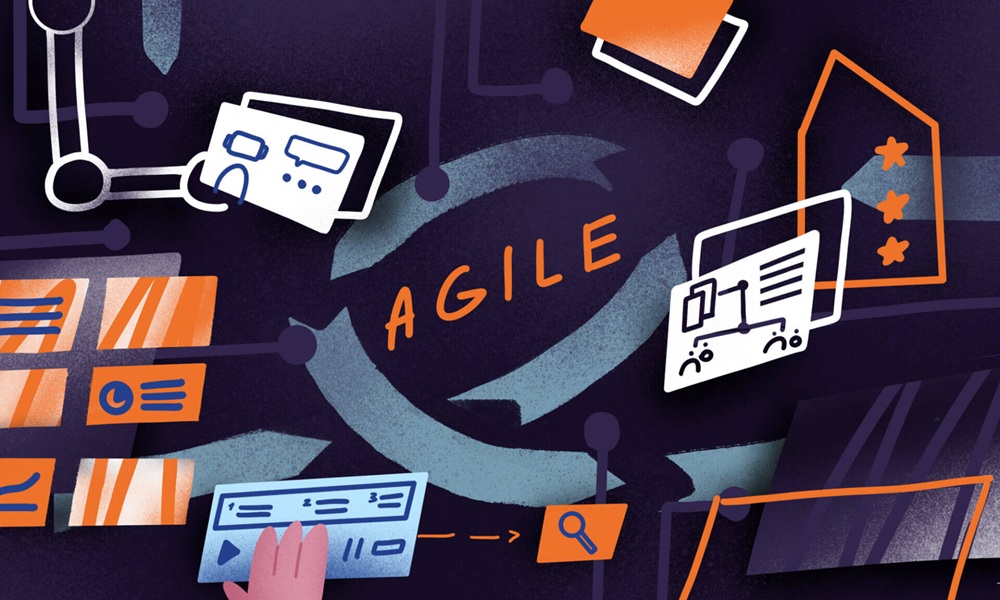In today’s fast-paced digital era, software development is no longer about long deadlines or static plans — it’s about speed, adaptability, and collaboration. That’s exactly where Agile methodology shines.
Originally introduced in 2001, Agile has evolved into one of the most widely used development frameworks across industries. In 2025, over 71% of global companies use some form of Agile practice (source: Atlassian Agile Trends Report 2025).
So, what makes Agile so powerful? Let’s break down how it works, why it’s preferred over traditional methods, and what benefits it brings to modern software teams.
What is Agile Methodology?
Agile is a flexible and iterative approach to software development. Instead of delivering a final product after months of coding, teams build software in small, incremental stages known as iterations or sprints.
Each sprint delivers a working version of the product that can be tested, reviewed, and improved.
This way, clients stay involved throughout the process — ensuring that the final product meets their evolving needs.
In short: Agile focuses on collaboration, adaptability, and customer feedback — not rigid plans.
How Agile Works: Step-by-Step
Step 1: Gathering User Requirements (Product Backlog)
The process begins with the Product Owner or business representative meeting clients to define goals and requirements.

These are compiled into a Product Backlog — a prioritized list of all desired features, known as user stories.
Step 2: Estimation and Sizing
Next, the development team estimates how much effort each user story requires. Using methods like Story Points, Planning Poker, or T-shirt sizing, they assign values to tasks based on complexity and time.
Step 3: Prioritizing Features
The Product Owner collaborates with stakeholders to determine which features are most critical to the business.
The team then selects the highest-priority items for the next sprint.

Step 4: Sprint Execution and Delivery
Each sprint typically lasts 2–4 weeks. During this time, the team designs, develops, tests, and delivers a functional part of the software.
At the end of every sprint, the working feature is demonstrated to the client for feedback.
Step 5: Review and Continuous Improvement
After each iteration, the team holds a Sprint Review and Retrospective — discussing what worked well, what didn’t, and what can improve.
Client feedback is added to the backlog, and the next sprint begins — continuing until the project is complete.
Agile vs. Traditional (Waterfall) Methodologies
| Aspect | Agile Methodology | Traditional (Waterfall) |
| Development Style | Iterative & incremental | Linear & sequential |
| Customer Involvement | Continuous | Minimal |
| Flexibility | Highly adaptable | Rigid |
| Delivery | Frequent working versions | One final delivery |
| Risk Level | Low — issues identified early | High — errors found late |
| Budget Efficiency | Cost-effective due to shorter cycles | Expensive due to delays |
Key Insight: According to Gartner (2025), Agile projects are 28% more likely to succeed than traditional waterfall projects due to early feedback and lower risk.
Why Businesses Prefer Agile
💬 1. Transparency & Collaboration
Agile keeps clients involved at every stage — from planning to testing — allowing real-time progress tracking. This transparency builds trust and reduces surprises.

🔄 2. Flexibility & Change Management
Agile thrives on change. New requirements, user feedback, or market updates can be integrated mid-process without derailing timelines.
🤝 3. Enhanced Customer Engagement
Clients act as partners, not observers. Their continuous input ensures the product meets real business needs — not assumptions.
⚡ 4. Faster Time-to-Market
With short sprints and frequent deliveries, businesses get usable software sooner — giving them a competitive edge.

🧩 5. Improved Quality
Regular testing and sprint reviews ensure bugs are caught early. The result? A stable, high-quality product that evolves with every iteration.
Agile in 2025: Modern Trends & Tools
In 2025, Agile continues to evolve with automation, AI, and hybrid models. Here’s what’s shaping the future:
- 🤖 AI-Augmented Scrum: AI tools like Jira Intelligence and Monday Dev AI now automate sprint planning, bug tracking, and risk prediction.
- ☁️ Cloud Collaboration: Distributed Agile teams use real-time cloud platforms for virtual stand-ups and sprint retrospectives.
- 🔀 Hybrid Agile + DevOps: Integration of CI/CD pipelines with Agile workflows shortens deployment times dramatically.
- 📊 Data-Driven Agile: Analytics dashboards now measure sprint velocity, defect ratios, and delivery predictability to refine team performance.
Fact: According to TechRepublic’s 2025 Developer Insights, hybrid Agile-DevOps adoption has grown by 45% since 2021, helping companies deploy faster and scale efficiently.
Final Thoughts
Agile isn’t just a software development framework — it’s a mindset that values collaboration, flexibility, and speed.
Whether you’re building a mobile app, managing a SaaS product, or launching enterprise software, Agile helps your team stay adaptable and customer-focused.
In 2025, companies that continue to embrace Agile — and evolve it with AI and automation — will stay miles ahead of competitors still using rigid, outdated models.




